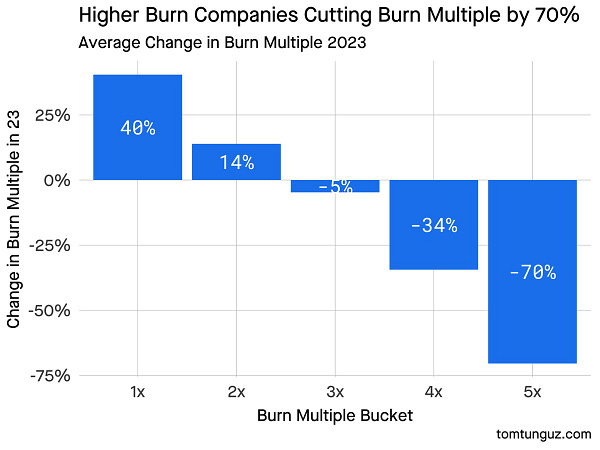What's 🔥 in Enterprise IT/VC #336
Jamie Dimon's JPM Annual Letter + where its >$2B incremental IT Spend is going
Apologies for the mess regarding the inability to embed tweets in my Substack. I did the best I could with screenshots where it made sense and shared links in other cases. I do hope that Twitter comes to its senses and understands the importance of an open internet.
This week was quite eventful personally as we had our boldstart team offsite here in Miami 🌴. While I do ❤️ our distributed team, it’s always nice to be together IRL and crank through important investor agenda items like pace of investing, focus areas, and where we can get blindsided. No worries - we are not chasing generative AI and LLM cos but also do understand the impact of AI on many portfolio cos in developer tooling for example. We are also continuing to double down on investing in technical founders with just ideas born out of pain they’ve experienced with no product in existence. Finally, meet our 2 newest partners George and Cooper 🐶 who are 100% focused on old school, unsexy infrastructure.
Switching gears, I always look forward to Jamie Dimon’s Annual Letter where he shares his thoughts on the business, the economy, and where he’s pointing his massive IT budget for the following year. Last year, (What’s 🔥 IT/VC #284) Jamie focused most of his IT Spend highlights on cloud priorities and this year’s letter is all about AI.
What is 🤯 to me is the the fact that JPM already has >1000 people on data management, >900 data scientists, >600 ML engineers, >200 AI Researchers, >300 AI use cases in production, >1000 APIs created, and >$2B spent in cloud migration with only 38% of apps in cloud which means there is still huge upside 📈!
Just a reminder JPMorgan spends >$12B annually on technology and this year it plans on increasing its spend by $2B.
AI, DATA AND OUR JOURNEY TO THE CLOUD
Artificial intelligence (AI) is an extraordinary and groundbreaking technology. AI and the raw material that feeds it, data, will be critical to our company’s future success — the importance of implementing new technologies simply cannot be overstated. We already have more than 300 AI use cases in production today for risk, prospecting, marketing, customer experience and fraud prevention, and AI runs throughout our payments processing and money movement systems across the globe. AI has already added significant value to our company. For example, in the last few years, AI has helped us to significantly decrease risk in our retail business (by reducing fraud and illicit activity) and improve trading optimization and portfolio construction (by providing optimal execution strategies, automating forecasting and analytics, and improving client intelligence).
We currently have over 1,000 people involved in data management, more than 900 data scientists (AI and machine learning (ML) experts who create new models) and 600 ML engineers (who write the code to put models in production). This group is focused on AI and ML across natural language processing, time series analysis and reinforcement learning to name a few. We’re imagining new ways to augment and empower employees with AI through human-centered collaborative tools and workflow, leveraging tools like large language models, including ChatGPT.
We also have a 200-person, top-notch AI research group looking at the hardest problems and new frontiers in finance. We were recently ranked #1 on the Evident AI Index, the first public benchmark of major banks on their AI maturity. We take the responsible use of AI very seriously and have an interdisciplinary team of ethicists helping us prevent unintended misuse, anticipate regulation, and promote trust with our clients, customers and communities. AI and data use is complex; it must be done following the laws of the land. But it is an absolute necessity that we do it both for the benefits I just described and, equally, for the protection of the company and the financial system – because you can be certain that the bad guys will be using it, too.
All of our technology groups firmwide work together in a flywheel of innovation and deliver state-of-the-art improvements. We are proud that our AI teams have contributed top-quality novel research and compelling solutions that are transforming more and more business cases every day.
AI is inextricably linked with cloud-based systems, whether public or private, and digital capabilities. Our company needs the cloud for its on-demand compute capacity, flexibility, extensibility and speed. Native cloud-based approaches will ultimately be faster, cheaper and aligned with the newest AI techniques, and they will give us easy access to constantly evolving developer tools.
We have spent over $2 billion building new, cloud-based data centers and are working to modernize a significant portion of our applications (and their related databases) to run in both our public and private cloud environments. To date, we have migrated approximately 38% of our applications to the cloud, meaning over 50% of our application portfolio (this includes third-party, cloud-based applications) is running on modern environments.
This journey to the cloud is hard work but necessary. Unlocking the full potential of the cloud and nearly 550 petabytes of data will require replatforming (putting data in a cloud-eligible format) and refactoring (i.e., rewriting) approximately 4,000 applications. This effort will involve not just the 57,000 employees we have in technology but the dedicated time of firmwide management teams to help in the process.
Remember all of this spend and modernizing of applications drives more spend
These “infrastructure” costs include things like modernizing developer tools and embedding operational resiliency and cybersecurity controls.
As always, 🙏🏼 for reading and please share with your friends and colleagues!
Scaling Startups
Searching for a better way to measure developer engagement + happiness? Check out Anna Debenham’s (boldstart Operating Partner, employee #4 Snyk) framework (Medium post) and slides
The Product-Led Geek shares a steady state model for a user journey and how to measure engagement
Wise words - https://twitter.com/semil/status/1643632722336776198?s=2
Enterprise Tech
Must read from Bessemer: A CEO’s tactical guide to driving profitable growth:
40 practices SaaS leaders can employ across their business to improve operational efficiency and profit margins.
Master class in TAM from Crowdstrike Investor Day on its path to $10B ARR - great deck for mature cos - also more on Falcon Cloud Security, its entry into the fast growing and super crowded cloud security market with Palo Alto Networks, the Wiz
BloombergGPT - can’t wait to see what GPT trained on financial data, news, and SEC filings can unlock (research paper here)
IMO, this is a huge untapped area for the future - how do you help enterprises particularly fin services leverage power of LLMs and yet maintain its security posture (full disclosure: I’m on board of BigID)
This highlights a new risk vector: training LLMs on client data, on customer data, on regulated data – essentially using data outside of the given purpose – can violate consumer privacy and accelerate risk on the data you know, and data you don’t. Even training LLMs on confidential intellectual property likely raises the risk that the confidential information is going to be leaked, breached, or hacked.
What if you could train LLMs on only the data safe for use? Automatically define which data sets are safe for training, effectively governing the data that goes into your AI input data sets.
With BigID, you can. BigID helps organizations find, filter and govern both structured data for rational AI and unstructured data for newer conversational AI. BigID enables customers to extend data governance and security to modern conversational AI & LLMs, driving innovation responsibly.
Customers can classify, label, and tag data by type, regulation, sensitivity, even purpose of use – across structured data, unstructured data, and everywhere in between. That makes it easier than ever to identify and label sensitive customer, privacy, regulated, intellectual property data, and more
from Gavin Baker interesting charts from Okta annual overview of software industry, also shares fastest growing apps…
friend Nicolae just crushed it with this launch - what if AI agents could write their own tools/plugins? Go to toolkit.club and check out the tweet and comments here
Startup burn multiples…
Markets
Seven Virtues of Great Investors (Jason Zweig WSJ) - curiosity, skepticism…
https://twitter.com/loganbartlett/status/1643622218721525763?s=2














It looks like you domain might not be set up/working correctly? https://www.whatshotit.vc/p/whats-in-enterprise-itvc-336?r=17lba&utm_medium=ios&utm_campaign=post links trying to share fail right now
Thanks for the mention Ed! 🙌